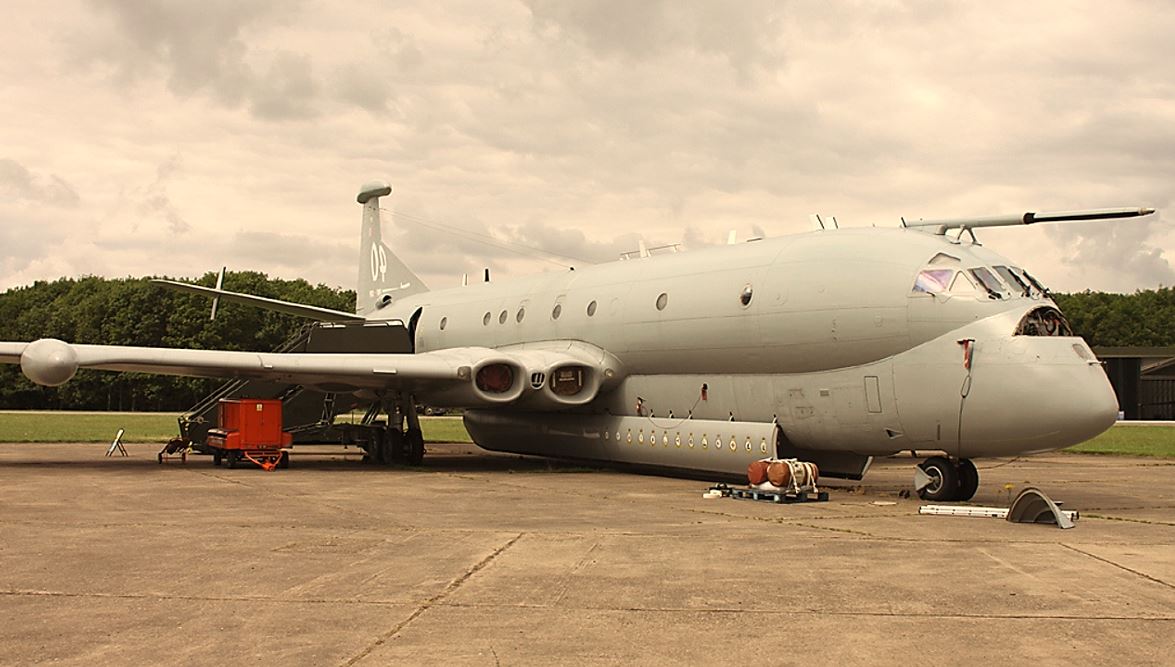 |
| British Aerospace Nimrod |
Nimrod is capable of conducting ground and sea surveillance, submarine attacks and conducting search and rescue missions.
It can carry AGM-84 Harpoon anti-ship missiles, bombs and depth bombs, as well as Stingray torpedoes. For self-defense can carry short-range air-to-air missiles AIM-9 Sidewinder.
From 1975 MR.Mk 1 was upgraded to MR.Mk 2 standard, the first conversation was re-sent to the RAF in August 1979. This variant introduces an entirely new range of equipment and avionics, including GEC central tactical systems, Thorn EMI Searchwater radars and acoustic systems compatible with modern sonobuoy.
In the early 1980s, eleven Nimrod MR Mk.1s were converted into Nimrod AEW Mk.3 standards in a failed programme to provide new air early warning aircraft to the RAF.
The addition of an inflight refuelling probe for the 1982 Falklands war created the Nimrod MR Mk. 2P -P then dropped in the late 1990s. An ESM Loral pod mounted on the wingtip was added later. Some Nimrods released to Oman for Operation Desert Storm have been modified with front-facing infra-red, BOZ electronic counter-measuring pods, and retractable radar feeds.
Three subsequent aircraft named Nimrod R Mk.1 served in the role of electronic intelligence gathering. The crashed R Mk.1 was replaced by changing the fuselage of the backup MR Mk.2 in 1997.
During the mid-1990s, the BAe was selected to update the 21 Nimrods to the MRA Mk.4 standard. This involved a virtually redevelopment of the fuselage total, the installation of a 66.73-kN BMW Rolls-Royce BR.710 turbofan engine, reinforced undercarriage, as well as new avionics and a series of sensors that would maintain Nimrod's capabilities to a very high standard. The program is scheduled to deliver a revitalized machine in 2010. But the program exceeded budget and was nine years behind schedule. Eventually this upgrade program was canceled. As a result, nimrod MR Mk.2 was withdrawn from UK service in 2010 without proper replacement.
During more than 30 years of service, Nimrod's forces performed various roles in supporting british defences. It has been involved in every major conflict in the last 30 years.









